Creating a harmonious living space can sometimes be challenging when you share your home with a furry friend.
Pets can dirty your newly painted walls, make your couch furry, scratch curtains, and even damage your cherished belongings.
Choose pet-friendly fabrics and furniture, easy-to-clean flooring, designate pet spaces, follow safety and cleanliness measures, safeguard belongings, add indoor plants, and use barriers for a beautiful, pet-friendly home.
Read on to explore creative design ideas for a secure and comfy home with your furry friends!
7 Proven Tips to Design a Stylish Pet-Friendly Living Space
In the US, 72% of millennials own a pet, and 67% consider their pets their fur babies.
Pets are now crucial to our lives, from homes to workplaces, restaurants, and retail spots.
As a result, pet-friendly design has become a vital aspect of modern homes. So, pet owners should address this growing need, from pet-friendly furniture to specialized pet zones.
Designing a stylish, pet-friendly living space requires thoughtful planning and consideration. Here are key factors to keep in mind.
When creating a pet-friendly living space, durability, and easy maintenance become paramount, especially concerning fabrics and furniture.
It is crucial to choose fabrics that can withstand the challenges of life with pets.
- Options like microfiber, leather, or synthetic materials offer style and resist stains and damage from scratching or clawing.
- Slipcovers are a sensible choice for upholstered furniture, providing the convenience of easy removal and cleaning to maintain a fresh and stylish appearance.
- Consider using pet-friendly furniture covers like sofa protectors or blankets to safeguard your furniture. It extends their lifespan while preserving a clean and appealing look.
- For areas in your home easily accessible to your pets, opt for metal furnishings such as wrought iron sofa sets, aluminum coffee tables, and alloy-based storage solutions.

These pieces work exceptionally well for lower cabinets, storage solutions, sofa sets, and coffee tables.
Furthermore, you can enhance durability and pet-friendliness by including a metal bed or wardrobe in your essential furniture pieces.
Prioritizing easy-to-clean flooring is crucial when preparing your home for the inevitable rainy days and the initial stages of puppy or kitten toilet training.
- Wooden floors are prone to dents, scratches, and rapid staining in the event of accidents, making them less than ideal for pet-friendly living spaces.
- If you strongly prefer the aesthetic charm of wood, consider choosing hardwood varieties such as mahogany or oak.
- Likewise, laminate flooring and stone or ceramic tiles emerge as the preferred choices for a more functional and pet-resistant flooring solution.
- These options simplify maintenance and provide exceptional durability, ensuring your floors maintain their unspoiled appearance despite pet-related challenges.
- Additionally, they also offer the advantage of keeping your furry companions comfortable and calm in your pet-friendly home during warmer weather.
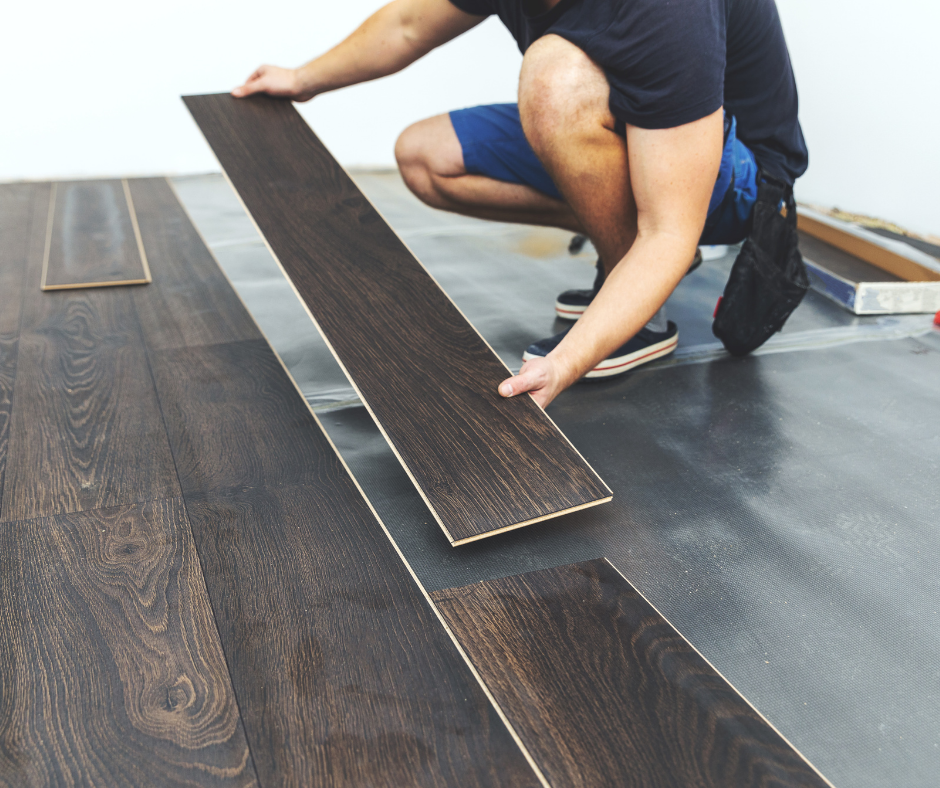
- Designated Food, Sleep, and Play Areas
Establishing designated areas for your pets enhances organization and contributes to your home’s overall aesthetics.
Here is how you ensure each space is fashionable and practical.
- Set up a dedicated feeding station featuring chic food and water bowls. Adding a tray or mat underneath will catch spills and protect your flooring.
- Create a cabinet or drawer underneath the feeding area to store pet food, treats, and feeding supplies.
- Invest in comfortable pet beds that seamlessly blend with your decor for a touch of coziness.
- Use pillows, throws, and blankets with textures accompanying your decor.
- Place them in a quiet corner or next to a sunlit window, providing your pets a space to relax and enjoy the view.
- Additionally, create a designated play space to maintain a tidy and concealed arrangement for toys when they are not in play.
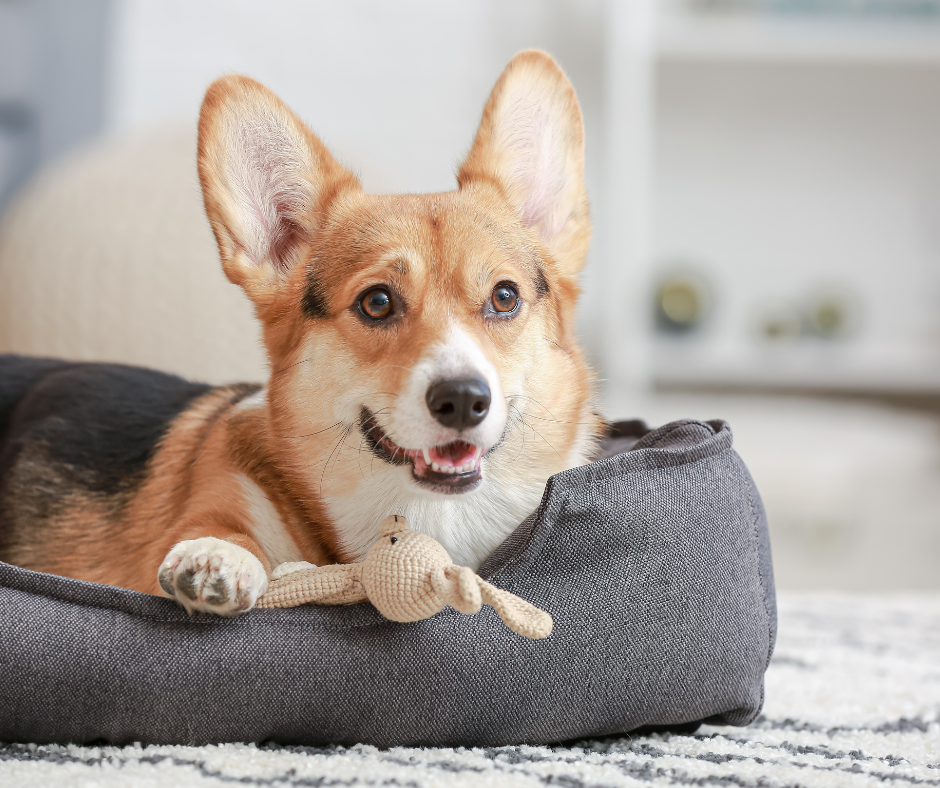
- Safety Precautions and Cleanings
Maintaining cleanliness and safety precautions when living with pets is essential.
Regular vacuuming will be best to keep pet hair at bay and ensure a clean environment.
When decorating and cleaning your home with the safety of your pets in mind, there are several necessary measures to consider.
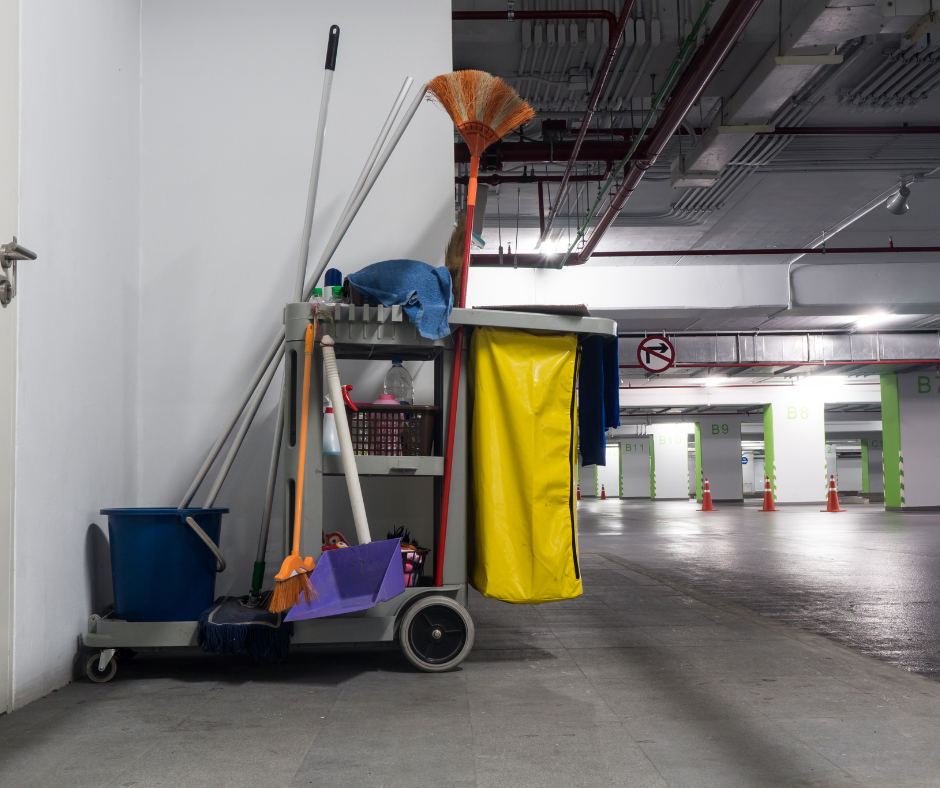
- Store cleaning materials and food in a separate room or behind closed cabinet doors to prevent curious pets from accessing potentially hazardous substances.
- Tape down electrical cords or hide them behind furniture to avoid accidental chewing or tripping hazards.
- Remove or replace trash cans with dog-proof models like touch-free stainless-steel options, which can prevent pets from rummaging through and ingesting harmful materials.
- Remember to tidy up items such as shoes, clothing, and kid’s toys that could pose a choking hazard or be damaged by playful pets.
- Opting for non-toxic cleaning products. Avoid exposing your pets to harmful chemicals that could lead to health issues or allergies.
- Ensure your home has functioning smoke alarms and carbon monoxide monitors, performing regular battery checks to keep everyone safe.
- Invest in a high-quality vacuum cleaner equipped with strong suction and specialized pet hair attachments to manage pet hair effectively.
In addition to vacuuming, keeping lint rollers or pet hair removers within reach helps quickly and effortlessly remove pet hair from furniture and clothing.
- Safeguard Your Precious Belongings
Designing a pet-friendly home while safeguarding your precious belongings requires careful planning.
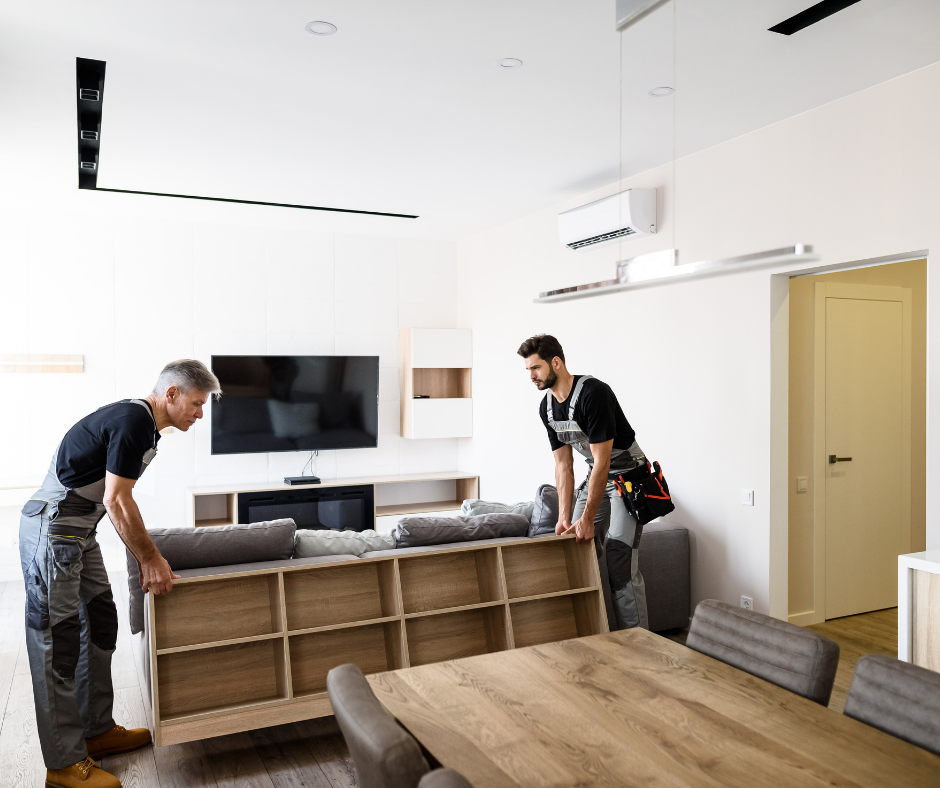
- Begin by installing sturdy, high shelves securely attached to keep your valuable items out of your curious pet’s reach.
- Furthermore, invest in locked cabinets that seamlessly match your room’s decor, offering added protection for items you prefer to keep concealed.
- When choosing decor, favor pet-resistant options like wall-mounted artwork or robust stone and metal sculptures that are less prone to being accidentally bumped.
- Transparent display cases or cabinets with glass doors are great for displaying delicate collectibles while ensuring safety.
- These strategies provide a pet-friendly environment and the preservation of your treasured possessions.
Adding indoor plants to your living spaces enhances the beauty of your rooms and contributes to better indoor air quality by providing oxygen and purifying the air.
However, designing a pet-friendly living space with plants can be more challenging for pet owners.
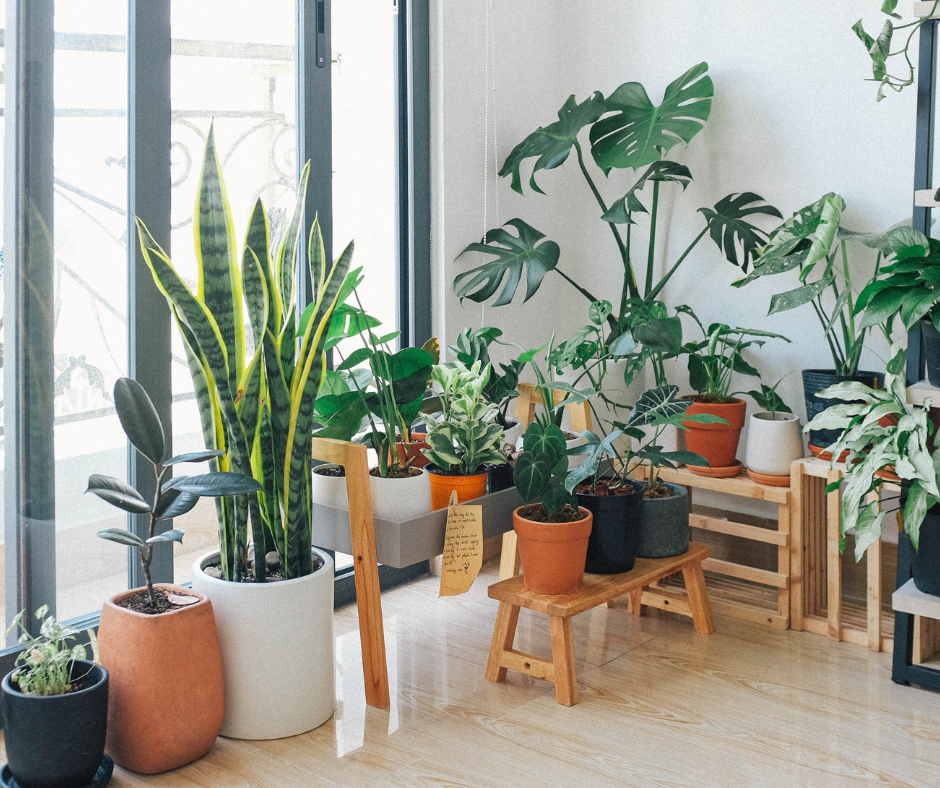
Select plants that are non-toxic to your specific pets. Cats, dogs, and other animals may have different sensitivities, so identify safe options.
Some pet-friendly plant choices include
- Spider plants
- Boston ferns
- Air plants
- Calathea
- Burro’s Tail
- Peperomia
Be aware of common household plants that can be harmful or allergenic to pets, such as lilies or philodendrons.
In addition to plant selection, consider implementing clever deterrents to protect your greenery from curious pets.
For example, cats do not like the scent of citrus, so placing lemon or orange peels in the soil or using citrus-scented sprays near your plants can discourage them from exploring.
Similarly, certain scents, like those from natural pet-safe repellents or fragrant herbs like lavender and rosemary, may deter dogs.
- Use Pet Gates and Barriers
Pet gates and barriers are indispensable for maintaining a safe and organized living space for you and your pets.
These versatile devices offer several advantages.
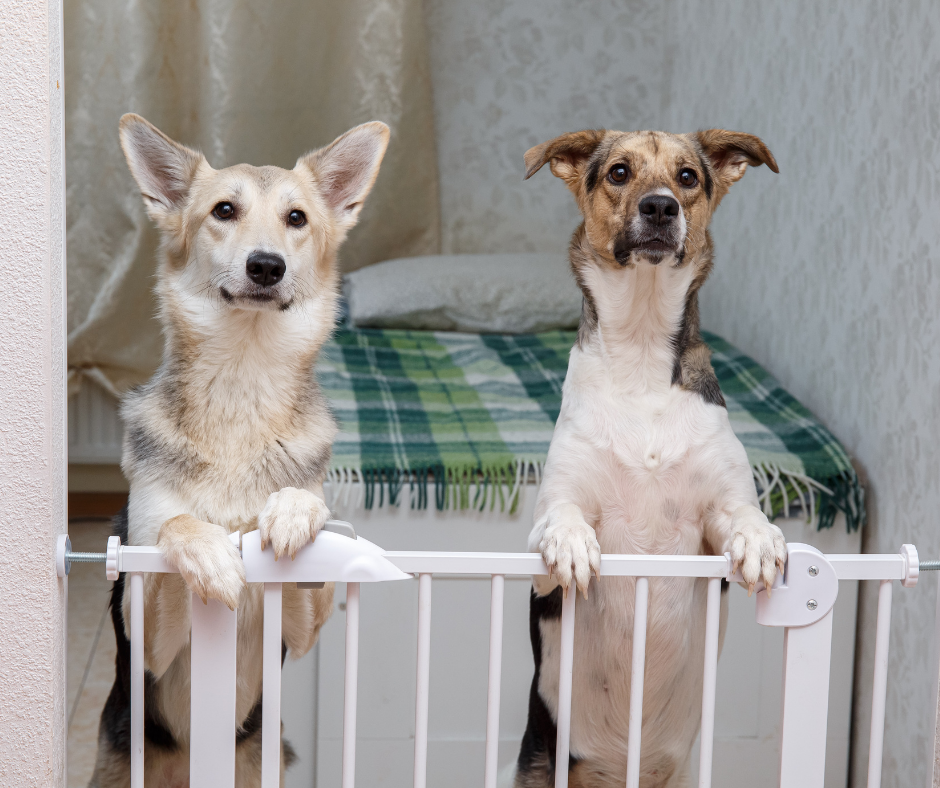
- They ensure the safety of your pets by preventing access to potentially hazardous areas like kitchens, staircases, or rooms with delicate items.
- Moreover, pet gates and barriers assist in training, setting clear boundaries for pets, and teaching them which areas are off-limits.
- Multi-pet households can facilitate separation when necessary, such as during meals or when introducing new pets.
- These barriers provide privacy, giving your pets designated spaces to relax without constant human presence.
- Look for easily installable options, like pressure-mounted gates, which allow flexibility in placement without causing damage to your home.
- Many pet gates and barriers are also designed aesthetically, ensuring they camouflage your home decor while prioritizing safety.
Conclusion
Designing your home with your beloved pets in mind does not necessitate compromising style or comfort.
By selecting pet-friendly materials, creating pet zones, and arranging the environment clean and safe, you can create a stunning living space that appeals to you and your furry companions.
For more, contact Urban Pet Hospital & Resort, the best pet hospital in Urbandale.